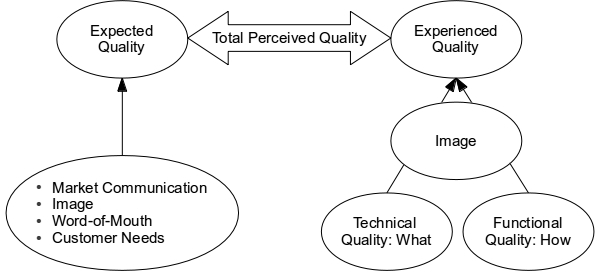
Do water utilities need to have customer focus?

Peter Prevos |
665 words | 4 minutes
Share this content
Customer focus is the prime purpose of all organisations, or so you would think. Many engineers in water companies believe that legislation and technical standards only govern the level of service quality experienced by customers. Engineers and scientists are the experts, and there is thus no need to ask the lay-customer what they want. One engineer expressed this view succinctly on LinkedIn:
You have to deliver good quality services, but I don't get the concept that the customer is best placed to decide what those services are. They know they need pressure and they know if they don't have water out of their tap, but beyond that, they have only a small understanding of the what is required to run a safe and efficient water supply system.
Service Quality Perception
The many engineers and scientists in water utilities that hold this view are wrong. Perhaps they need to follow a course in marketing for engineers.
These engineers assume that if the technical quality of service is sufficient, then customers will be happy. This assumption is not correct—the Grönroos model of service quality shows that technical quality is only one aspect of the total customer experience.1 To influence the total perceived quality, many non-technical parameters, such as public image and functional quality, need to be managed.

Engineering and Marketing
There is a significant paradigmatic difference between engineering and marketing. Engineering is based on predictable physical systems, while marketing builds on the inexact science of consumer behaviour and is predominately about managing perceptions. There are many examples where, even though technical quality is almost perfect, the understanding of consumers of the level of service is still small. This problem exists because the human dimension is not part of the equations that govern water systems.
One perfect example is the aesthetics of water. Although it makes no difference towards the actual safety of the water, consumer perception is that drinking water is colourless. Taste is another variable that is not easily controlled or measured through engineering. Research shows that water does not only influence the taste of water but moderated by environmental variables, such as the material of the cup.2
Perception is everything in marketing. This concept is also important in monopolies because publicly owned businesses are controlled by politicians who want to keep the voters happy. Having said this, a good friend of mine once stated that “voter satisfaction is not a good proxy for customer satisfaction”. It could also be argued that all customers in a publicly owned system are all shareholders, and their views should be taken into consideration—any other opinion could be considered arrogant.
Marketers should manage water companies.
Water Utility Customer Focus
In my interviews with customer stakeholders in reticulated water, the voice of the customer indicates that they want to improve the focus on their needs. A clear theme in the data is the occasional disconnect between engineering and service staff. One respondent told me (paraphrasing): “Engineers used to run water companies, now accountants manage them. In the future, marketers should control them”. In other words, we should account for the non-rationality of consumer behaviour.
The concept of bringing engineers and marketers together was beautifully expressed by Philip Kotler and Sidney Levy who writes that: "Marketing is customer satisfaction engineering".3
Water Utility Marketing
If you like to learn more about water utility marketing, then please consider reading Customer Experience Management for Water Utilities by Peter Prevos.

Customer Experience Management for Water Utilities: Marketing Urban Water Supply
Practical framework for water utilities to become more focused on their customers following Service-Dominant Logic.
Grönroos, C. (1984). A service quality model and its marketing implications. European Journal of Marketing, 18(4), 36–44. doi:10.1108/EUM0000000004784.
Krishna, A., & Morrin, M. (2008). Does touch affect the taste? The perceptual transfer of product container haptic cues. Journal of Consumer Research, 34(6), 807–818.
Kotler, P., & Levy, S. J. (1969). Broadening the concept of marketing. Journal of Marketing, 33, 10–15.
Share this content


